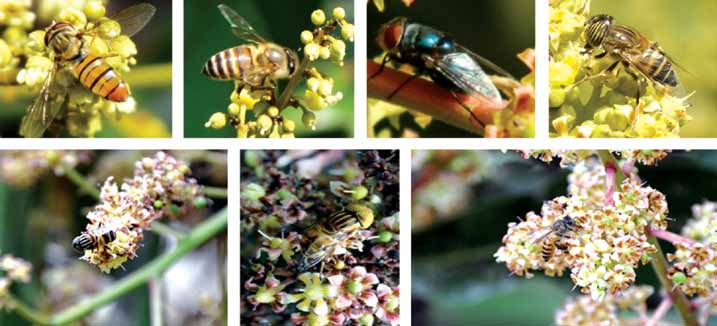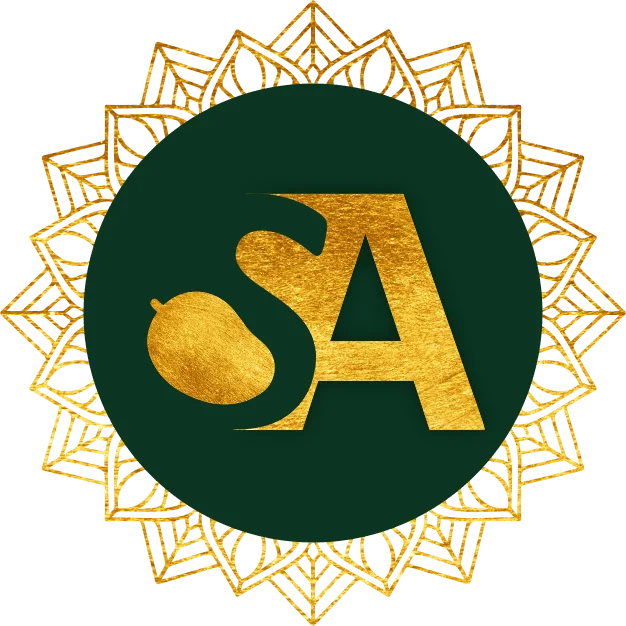Conservation of mango insect pollinators
Mango is the country’s most important commercially grown fruit crop. Millions of farmers rely on this important fruit crop for their livelihood. Because of pollination, farmers in several important mango-growing areas in India are unable to harvest their crops even after abundant flowering. Mango productivity is highly dependent on pollination in some areas. Mango orchard pollination has become a challenge as a result of excessive pesticide use and ecosystem destruction. Pollinator deficit is one of the many factors that contributes to mango’s low productivity.
MANGOES produce male and hermaphrodite flowers. The tiny red-yellowish flowers with five sepals and three to nine (usually five) petals. Petals are small and are not much attractive to insects. The flowers are arranged on the branched and clustered panicles that range in length from 10 to 45 cm. A single tree can have between 200 and 3,000 panicles, each with 500 to 10,000 flowers. A significant proportion (30–80%) of flowers are imperfect or staminate (i.e. lacking a style and therefore incapable of being fertilized). Flowers in their ideal state have a globular ovary and lateral style, as well as one to three functional stamens. As compared to staminate flowers, white flowers are too less in number. Only a small percentage of perfect flowers bear fruit (zero to three per panicle).
The fragrant flowers open early in the morning, immediately produce nectar and are pollination- receptive. Pollen shedding occurs slightly later, peaking between 8 AM and noon. Numerous pollinators visit the flowers, including flies, wasps, wild and domesticated bees, butterflies, moths, beetles, ants, and bugs. Despite this prominent visitation, early reports indicated that mangoes were pollinated by wind. While some of the disagreements centre on cultivar differences, the several evidence indicate that insect pollinators, in particular, play a critical role.
Table 1. Diversity of the insect visitors/pollinators on mango flowers at Lucknow
Common name | Scientific Name | Order: Family |
Little honey bee | Apis florea Fab. | Hymenoptera : Apidae |
Stingless bee | Tetragonula iridipennis Smith | Hymenoptera: Apidae |
Giant honey bee | Apis dorsata Fab. | Hymenoptera : Apidae |
Indian honey bee | Apis cerana indica Fab. | Hymenoptera : Apidae |
European honey bee | Apis mellifera L. | Hymenoptera : Apidae |
Blowflies | Chrysomya sp. | Diptera: Calliphoridae |
Syrphid fly | Syrphus corollae Fab. | Diptera: Syrphidae |
Syrphid fly | Eristalinus sp. | Diptera: Syrphidae |
Housefly | Musca domestica L. | Diptera: Muscidae |
Wasp | Vespula orientalis L. | Hymenoptera : Vespidae |

Insect mediated pollination in mango
The mango’s ability to attract insects by producing nectar also indicates that it is entomophilous. Mango flowers are unspecialized, allowing most insects to pollinate them. These pollinators are necessary for the fruit set to be successful. Flies, wasps, bees, butterflies, moths, beetles, ants, and other bugs visit mango flowers to drink the nectar, and some of them transfer pollen, but there is some self-pollination as well. According to observations, the most important floral visitors are Diptera (Syrphid flies and house flies), Hymenoptera (Honeybees, stingless bees, bumblebees, solitary bees, and other non-apis bees), Lepidoptera (Moths and Butterflies), and Coleoptera (Beetles).
In India, researchers looked into the types and biology of mango pollinators and discovered that Diptera and Hymenoptera insects play a significant role in mango pollination. Insects are thought to play a 53% role in mango fruit sets. The removal of flying and crawling flower visitors from mango panicles reduced fruit set by 79%.
Pollinator population declines, both in natural and agro-ecosystems, have recently become a matter of concern. Large-scale insecticide use, clean cultivation, large tracts of monocropping, lack of off-season flora, and climate change are all contributing to pollinator decline. The pollinator density in commercial orchards is significantly lower than in undisturbed orchards, according to surveys conducted by ICAR-CISH under the NICRA (National Initiative on Climate Resilient Agriculture) project in major mango-growing areas of the country.
Insect pollinator conservation is critical in the mango ecosystem
Though the practice of introducing honey bee colonies to achieve pollination is popular, it has limited application in mango because of the efficiency of hive bees, such as Apis cerana and A. mellifera, in mango pollination, is often questioned due to the small amount of pollen produced by mango. Scheduled insecticide sprayings to control leafhoppers and inflorescence caterpillars during the blossom period make introduced honey bees vulnerable, resulting in colony desertion and thus limiting their economic viability. Aside from the cost, another important limitation for the large-scale use of bee colonies in mango orchards is the availability of an adequate number of colonies within a reasonable distance.
Pollinator conservation strategies in mango orchards
- Protection and encouragement of alternative nectar sources for pollinators. Nature is full of pollinators; however, the concern is how to attract them to the orchard. There are two suggested ways, first, make some artificial attractant bait stations in the orchard so that surroundings pollinators are attracted. The second is to bio-intensify the orchard with pollen and nectar-producing flora like lucerne, Cassia occidentalis, Cassia tora, Indian Senna, Cotton, Vicia angustifolia, cowpea, maize or lantana, etc.
- Provision of protection and encouragement of pollinators by developing entomophagy parks in orchards where round the year pollen and nectar are available for pollinators.
- The modern generation insecticides like neonicotinoids are reported to cause great damage to pollinators in mango. These chemicals are widely used to protect the mango crop from hoppers at the flowering stage which is the crucial pollination stage. There is an array of other chemicals which are relatively less harmful to pollinators. These chemicals may be assessed for their efficacy to the hopper and their safety to pollinators. The schedule of the spray on the mango for the management of major pests may be modified in line with the pollinator’s safety.
- Restricted weeding and weeding operations within orchards may lead to the growth and maintenance of various kinds of weed flora. Being small heightened these weeds have no competition with mango rather enrich underground soil with various kinds of root exudates and multiplication of underground flora and fauna. On the other hand, these weeds give pollen and nectar to harmless insect conservation. These insects help in pollination in the main season.
- As such, there is a need to re-define the mango production system in light of improving the insect- mediated pollination in the mango ecosystem
Author
Gundappa Baradevanal and H S Singh

